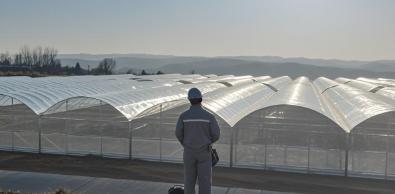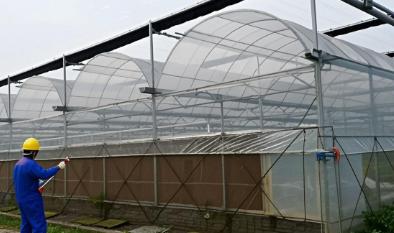Hey there, greenhouse growers! Managing pests in your greenhouse can be a daunting task, but with the right strategies, it doesn't have to be. This ultimate guide will walk you through an integrated approach to pest control, combining various methods to keep your greenhouse healthy and pest-free. Let's dive in!
1. Prevention is Key
The first step in any pest control strategy is prevention. Here are some tips to keep pests from entering your greenhouse in the first place:
Sanitize Your Space: Regularly clean your greenhouse to remove any potential hiding spots for pests. This includes sweeping floors, wiping down surfaces, and disinfecting tools.
Inspect New Plants: Before bringing new plants into your greenhouse, inspect them thoroughly for signs of pests or disease. Quarantine new plants for a week or two to ensure they don't introduce any issues.
Use Screens and Barriers: Install fine mesh screens on vents and doors to prevent flying insects from entering. Insect netting can also be used to cover plants or entire sections of your greenhouse.

2. Monitor and Detect Early
Regular monitoring is essential for early detection of pest problems. Here’s how you can stay ahead:
Regular Inspections: Walk through your greenhouse daily to check for signs of pests. Look for chewed leaves, sticky residue (honeydew), or visible insects.
Use Sticky Traps: Place yellow sticky traps around your greenhouse to catch flying insects like whiteflies and fungus gnats. Check these traps regularly to identify pest populations early.
Pheromone Traps: For specific pests like moths, pheromone traps can be highly effective in detecting and controlling adult populations.
3. Biological Control: Nature’s Helpers
Biological control involves using natural predators and microorganisms to manage pests. Here are some effective options:
Predatory Insects: Introduce beneficial insects like ladybugs (for aphids), predatory mites (for spider mites), and lacewings (for whiteflies). These predators can significantly reduce pest populations.
Microbial Insecticides: Products like Bacillus thuringiensis (Bt) and Beauveria bassiana are safe for humans and the environment but deadly to specific pests. These can be particularly useful for caterpillars and fungus gnats.
4. Chemical Control: When Necessary
Sometimes, biological control alone isn’t enough, and chemical insecticides become necessary. Here’s how to use them effectively:
Choose the Right Product: Select insecticides that are specifically labeled for greenhouse use and target the pests you’re dealing with. Consider using systemic insecticides for longer-lasting protection.
Follow Label Instructions: Always read and follow the label instructions carefully. This includes application rates, timing, and safety precautions.
Rotate Products: To prevent pests from developing resistance, rotate between different classes of insecticides.

5. Cultural Practices: Creating a Healthy Environment
Healthy plants are less susceptible to pests. Here are some cultural practices to promote plant health:
Proper Watering: Overwatering can lead to root rot and attract pests like fungus gnats. Ensure proper drainage and water plants only when necessary.
Nutrient Management: Provide plants with the right nutrients to support strong growth. Use balanced fertilizers and soil amendments to maintain soil health.
Pruning and Thinning: Remove dead or diseased plant material to improve airflow and reduce potential pest habitats.
6. Physical Control: Barriers and Traps
Physical methods can be highly effective in preventing and managing pests:
Insect Netting: Use fine mesh netting to cover plants or vents to prevent pests from entering.
Row Covers: Lightweight fabric covers can protect plants from pests while allowing light and air to penetrate.
Hand Removal: For larger pests like caterpillars, manual removal can be an effective method.
7. Integrated Pest Management (IPM)
Combining all these methods into an integrated pest management (IPM) strategy is the most effective way to control pests in your greenhouse. IPM involves:
Prevention: Using cultural and physical methods to prevent pest problems.
Monitoring: Regularly inspecting your greenhouse to detect pest issues early.
Biological Control: Introducing natural predators and microorganisms to manage pests.
Chemical Control: Using insecticides as a last resort and rotating products to prevent resistance.
Evaluation: Continuously assessing the effectiveness of your pest control measures and adjusting as needed.
Conclusion
Managing pests in your greenhouse doesn’t have to be a battle. By adopting an integrated approach that combines prevention, monitoring, biological control, and targeted chemical use, you can keep your greenhouse healthy and thriving. Stay proactive, stay informed, and keep your plants happy!
Welcome to have a further discussion with us.
Phone: +86 15308222514
Email: Rita@cfgreenhouse.com
Post time: Jul-05-2025







 Click to Chat
Click to Chat